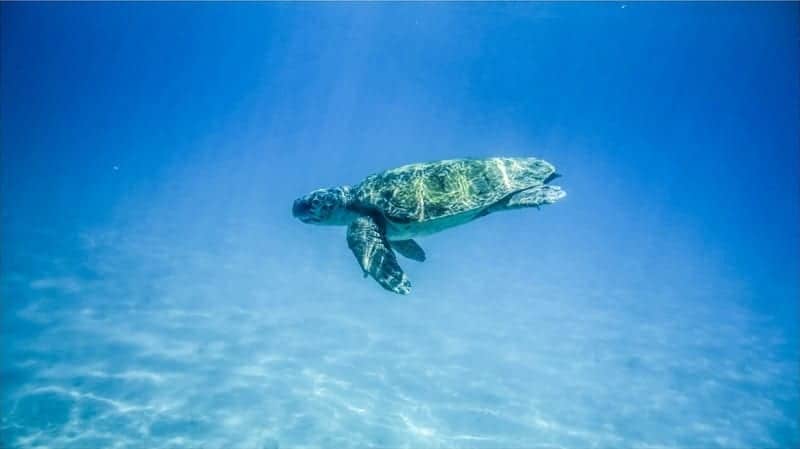10 Reasons We're Thankful to Live on Maui
This list could've run on for pages and pages. But on this extended holiday weekend, we'll settle for our top 10 reasons to be thankful for living on ...

The Hawaiian islands represent one of the most biologically diverse locations on the planet. The marine life throughout our archipelago is spectacular, as you'll find on our Lanai and Molokini snorkel tours. But a lot of the most fascinating and mysterious creatures live at depths that are difficult to reach, or mostly inaccessible to humans. What if a new technology made these aquatic wonderlands easier to explore and therefore understand? There is one such technology, and depending on its level of success, the world could be in for a deluge of discoveries!
While you may be familiar with flying drones that are used for photography, filming, and even parcel delivery, you may not know that there are underwater drones as well, thanks to the OpenROV (remotely operated vehicles) project. These drones allow us a look at the underwater world from remote locations, and they have led to some big strides in science and conservation.
The technology was developed by National Geographic Emerging Explorer David Lang through his OpenROV project, which helps both scientists and interested citizens examine the marine life and conditions beneath the surface. Lang's goal was to accelerate marine discoveries by allowing people access to cameras on ROVs. You've probably heard it said that we know more about the moons of other planets in our solar systems than we do about the depths of our own ocean. That's still true, according to scientists, but Lang's ROVs may prove to be the best way to change all of that.
Recently, his project got enough grant money to distribute 1,000 units of its newest drone, a model known as the Trident. The units will be distributed by OpenExplorer, a companion site for the project. These free drones will go to citizen scientists, non profit organizations and classrooms. The drones that are already out being used in the world's oceans have led to some interesting efforts. National Geographic has highlighted the top five.
1. Watching for changes along California's coast
Folks are volunteering at Pelican Cove on the Palos Verdes Peninsula to photograph sea creatures in the area, and plan to use the Trident drones to track any changes in the location of these sea creatures. They'll be keeping an eye out for changes in sea level, temperature and acidity to explain the changes. Pelican Cove is part of a marine protected area, so citizens are especially interested in the health of the ecosystem there.
2. Safeguarding fish stocks in the Mexican Caribbean
A conservation group known as COBI will be using the Trident to educate fishermen on the status of fish populations. They're currently identifying spawning sites for grouper and snapper in the Caribbean to curb overfishing. They're also training local fishermen how to dive to evaluate the fisheries themselves, but the Trident will let them reach more difficult depths in their explorations. It's all part of an effort to keep fishing sustainable.
3. Saving an underwater world in British Columbia
Off the coast of British Columbia in Howe Sound, scientists have found an ancient ecosystem of glass sponges that were once thought to be extinct. National Geographic Explorer Erika Bergman is leading a team to study these reefs using drones and manned submarines. If successful, she and her team will make the Salish Sea area a UNESCO World Heritage site, preventing further damage to a magnificent ecosystem full of these rare sponges and their neighbors, which include octopus, anemones, cod, rockfish, sharks and much more.
4. Aiding "robomussels" in New England
A team from Acadia National Park is monitoring the Gulf of Maine for ocean acidification and warming. They're doing this by placing tiny temperature loggers inside live mussels to track conditions. The Trident will help them get visuals on the conditions off their coastline, which they will share with students to inspire them about ocean health, conservation and science.
5. Unlocking the secrets of the Mediterranean
The Mediterranean Sea is known to harbor countless shipwrecks from far back in the history of civilization. A Swiss nonprofit known as the Octopus Foundation is planning to chart the depths of this sea and explore whatever wrecks have withstood the elements over the years. They estimate there are about 750,000 antiquated wrecks down in those depths. It could be a high estimate... but it's more likely a low one. The organization uses storytelling to share the history of these places and historical events.
Lucky for us, and for you, plenty of Hawaii's reefs are accessible in pleasantly warm temperatures so you can go out exploring in person. Join us aboard a Molokini or Lanai Snorkel Tour and you'll see these marine wonders yourself! In the meantime, if you're interested in new marine discoveries, maybe keep an eye open for news about OpenROV's for some interesting reports. Mahalo!
This list could've run on for pages and pages. But on this extended holiday weekend, we'll settle for our top 10 reasons to be thankful for living on ...
1.) At just over 140 square miles, Lana'i is the sixth largest island of the Hawaiian island chain. During the 2010 census, Lana'i's counted just 3,10...
Unlike the Caribbean, there hasn't been a long history of pirate activity in Hawaii. But there is one incident, one that many believe was the last lar...
